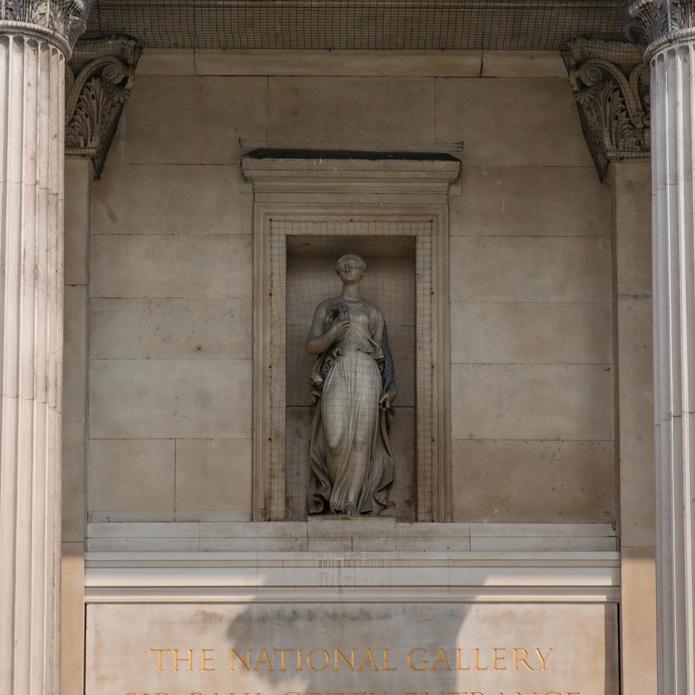Probably by Edward Hodges Baily, 'Victory', 1826-32
About the work
Overview
This Victory, along with the winged Victories to its left and right, is the work of the British neoclassical sculptor, Edward Hodges Baily. Together with another five female figures, they adorn the façade of the National Gallery.
In 1826, Baily received a large order for sculpture, including four statues of ‘Victories’, for Marble Arch, which was to be erected in celebration of Britain’s defeat of the French in the Napoleonic Wars. Although Baily completed his commission, not all of his work was used as originally intended; some parts ended up adorning other government buildings. During the construction of the National Gallery, its architect, William Wilkins, was forced in a cost-cutting exercise to recycle masonry and statuary from other projects. This explains the presence above the Getty Entrance of this statue personifying Victory, accompanied by two winged figures, even though all three pieces were initially created for the Marble Arch commission.
Key facts
Details
- Full title
- Victory
- Artist
- Probably by Edward Hodges Baily
- Artist dates
- 1788 - 1867
- Part of the group
- Getty Entrance Sculptures
- Date made
- 1826-32
- Medium and support
- Portland stone
- Acquisition credit
- Commissioned by the Office of Works for the Marble Arch, and installed on the Gallery by 1838
- Inventory number
- H214
- Location
- Gallery Exterior: Getty Entrance
- Collection
- Contextual Collection
About this record
If you know more about this painting or have spotted an error, please contact us. Please note that exhibition histories are listed from 2009 onwards. Bibliographies may not be complete; more comprehensive information is available in the National Gallery Library.
Images
About the group: Getty Entrance Sculptures

Overview
The National Gallery’s Getty Entrance is surmounted with a figure of Victory, framed by another full-length, draped female figure in each of the niches to left and right. This pair of flanking winged figures carry attributes to identify who they are: both clasping a palette and paintbrushes, they symbolise the art of painting fostered inside the building. All three statues are the work of the British neoclassical sculptor Edward Hodges Baily, although he made them not for the National Gallery but for the Marble Arch, a monument intended to celebrate Britain’s defeat of the French in the Napoleonic Wars. When the figures were repurposed to adorn the nation’s public art gallery in a cost-cutting exercise, their original military accoutrements of spear and shield were transformed into more appropriate brushes and palettes.











